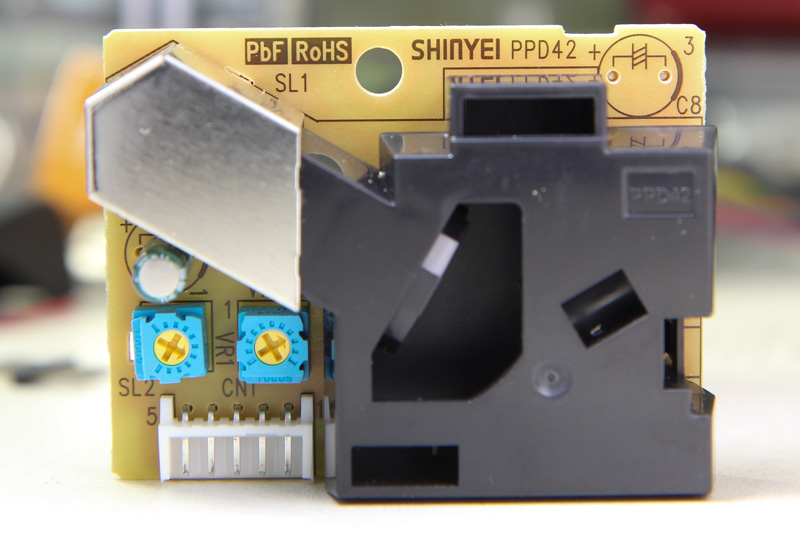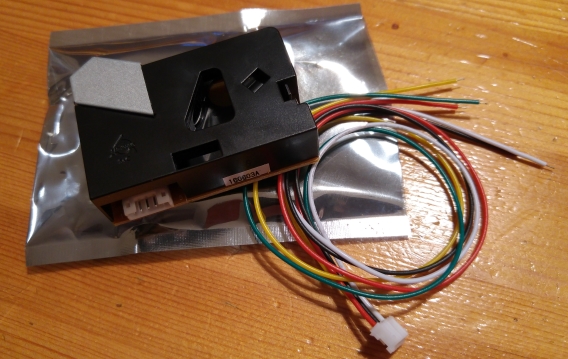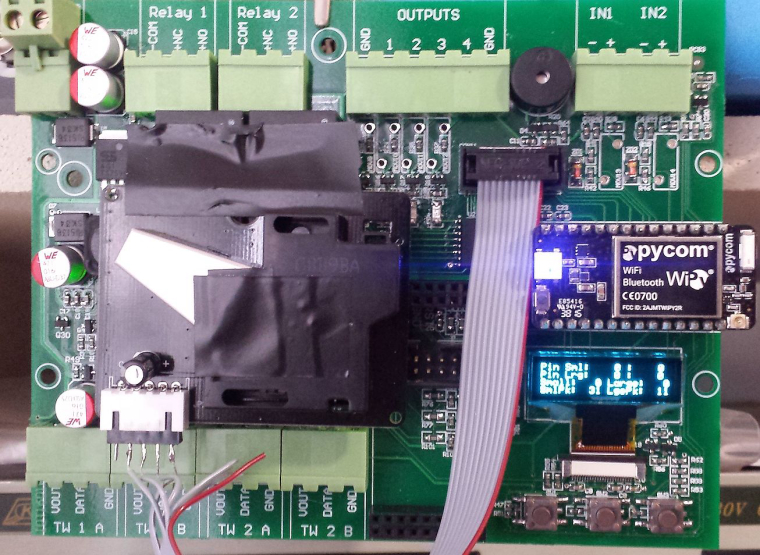Shinyei PPD42NS particle sensor
-
Anyone tried to attach the Shinyei PPD42NS sensor to a Pycom device?
It would be interesting to compare the results of this sensor with say a PMS5003 particle sensor on a Pycom device.It is a very cheap sensor that can be used to measure air quality in a crude way.

-

Arrived in time for the hackaton this Saturday. :)
-
@RobTuDelft Hi Rob, if you want the added info of particle size, you really do need to monitor both PWM outputs, but if you only plan on monitoring a single pin, then monitor the small particles pin.
I do take the duration of low pulse width on each pin into account too, at a resolution of 1ms.
The Amphenol sensor that I am using, I have noticed does not produce pulses narrower than 1ms
-
@Shaun The pulse width is also an indicator for particle size. So you could add counters based on the pulse length even with just one PWM output. Something I will test later.
-
I have been running a unit for a couple of weeks now.
I hacked it onto an existing application PCB I developed around a WiPy.The unit I use has 2x PWM outputs, one for larger particles and one for smaller particles
I am displaying real time readings, an exponential running average and a resettable peak hold.

-
@RobTuDelft not just different nane, but also different price. I ordered 2 for €8,88 incl. shipping via AliExpress.
The grove connector is nice for the Marvin though.
-
Fyi, I'm using a LD1117A voltage regulator on the digital PWM input signal. It drops it from 4.5V to about 2.5V, which is enough for it to be a high signal on the Lopy.
My readings are around 400 pcs/0.01cf in the office.
I have resolved a few bugs in the code, so be sure to use the latest version from my Github.
@PiAir did you know you can also order them in the Netherlands under a different name?
-
@PiAir Sure, will bring it :)
-
Cool, nice to collect other data than just temperature and humidity. I ordered one (two) from AliExpress, probably won't be here in time for Eindhoven, but maybe you can bring your setup and demonstrate it then? :)
-
I have created a library for this particulate matter sensor based on the Arduino code if anyone is interested.
You can find the code here.Sensor needs to be connected to 4.75 - 5.25 V and you need to drop the voltage for the input port.
If you have any comments or questions let me know.